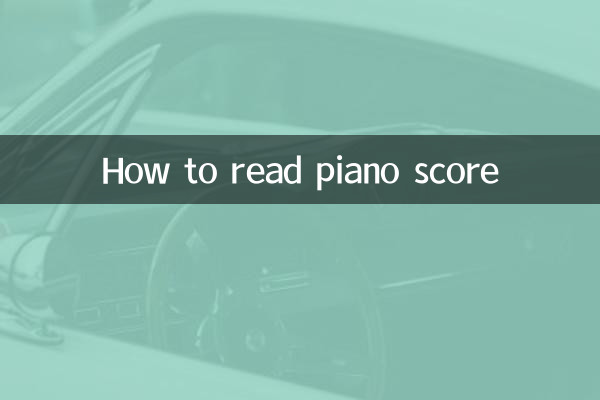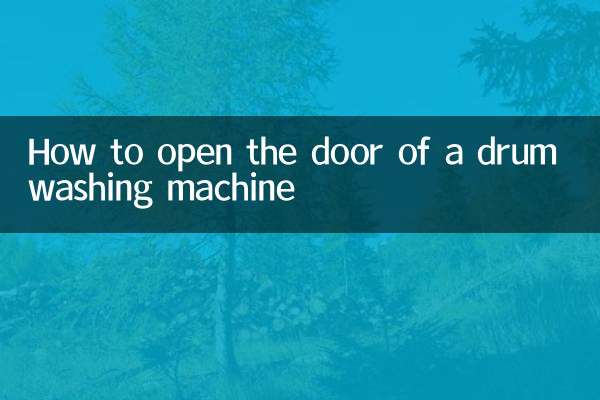How to read piano music: a comprehensive guide from beginner to proficient
Piano is a classic musical instrument, and learning to read music is a must for every piano lover. Whether you are a beginner or a player with a certain foundation, mastering the skills of reading music can greatly improve your learning efficiency. This article will combine the hot topics and hot content on the Internet in the past 10 days to provide you with a detailed analysis of the methods and techniques of reading piano music.
1. Basic composition of piano score

Piano tabs are composed of staffs and notes. Understanding these basic elements is the first step to reading the tabs. The following are the main components of a piano score:
| components | illustrate |
|---|---|
| staff | Composed of five parallel lines, notes placed on different lines or between lines represent different pitches |
| treble clef | Also called the G clef, usually used for the treble part played by the right hand |
| bass clef | Also called the F clef, usually used for bass parts played by the left hand |
| note | Symbols representing pitch and duration, including whole notes, half notes, quarter notes, etc. |
| beat | The rhythmic structure of a piece of music is determined by the time signature and note duration. |
2. How to quickly identify notes
Recognizing musical notes is a key skill in reading music. Here are some effective memorization methods:
| method | illustrate | Applicable people |
|---|---|---|
| fixed phonetic nomenclature | Remember the note name corresponding to each line or space (for example, a line under the treble clef is C) | beginner |
| interval relationship method | Identify by the interval relationship between adjacent notes | intermediate learner |
| homophone memory method | Use homophonic formulas to help remember (such as treble clef line sounds: Every Good Boy Does Fine) | visual learner |
3. Advanced skills in reading piano music
After mastering the basics, you can try the following advanced techniques to improve your score reading efficiency:
1.Pre-reading skills: When playing the current note, your eyes have already looked at the following notes in advance. Cultivating this "advanced" awareness can greatly improve the fluency of your performance.
2.Harmony analysis: Understand the harmonic structure of the music, you can predict the direction of the next notes, and reduce the pressure of reading music scores.
3.Practice in sections: Divide the music into small sections for practice and connect them step by step, which is more effective than practicing the entire piece.
4.rhythm training: Use a metronome to assist in practice to ensure accurate rhythm, which is the basis for playing based on music scores.
4. Frequently Asked Questions
| question | answer |
|---|---|
| What should I do if I always look down at the keys when reading music? | Slow down the speed first, gradually develop your fingers' memory of the key positions, and reduce visual dependence. |
| How to improve the speed of reading music? | Conduct dedicated sight-reading exercises every day, starting with simple music and working your way up |
| What should I do if I encounter complex rhythm patterns? | Disassemble the rhythm separately and practice it, simulate it with a "dah" sound, and then add the pitch after you are proficient. |
| How to memorize key signature? | Understand the relationship between key signatures and scales, and make memory cards to assist memory |
5. Recommended popular piano learning resources across the Internet
According to the Internet hot spots in the past 10 days, the following piano learning resources have attracted much attention:
| Resource type | Recommended content | heat index |
|---|---|---|
| APP | Simply Piano, Flowkey | ★★★★★ |
| Video tutorial | Station B's "Basic Piano Tutorial" Series | ★★★★☆ |
| Online courses | Coursera Piano Beginner's Specialty Course | ★★★☆☆ |
| books | "John Thompson's Easy Piano Tutorial" | ★★★★☆ |
6. Summary
Reading piano music is a skill that requires long-term practice, and there is no shortcut. Through systematic study and continuous practice, anyone can master this skill. It is recommended to arrange a fixed time every day for special music reading training, and proceed step by step from simple to complex. Remember, the improvement of your music reading ability will be directly reflected in your playing level, and it is a basic skill worth investing time and energy.
Finally, learning piano is a process of enjoying music, so don’t put too much pressure on yourself. Keep a happy mood and progress at your own pace, and you will find that reading music becomes more and more natural and your playing becomes smoother.

check the details

check the details